Martin Feldbauer, Too much is not enough
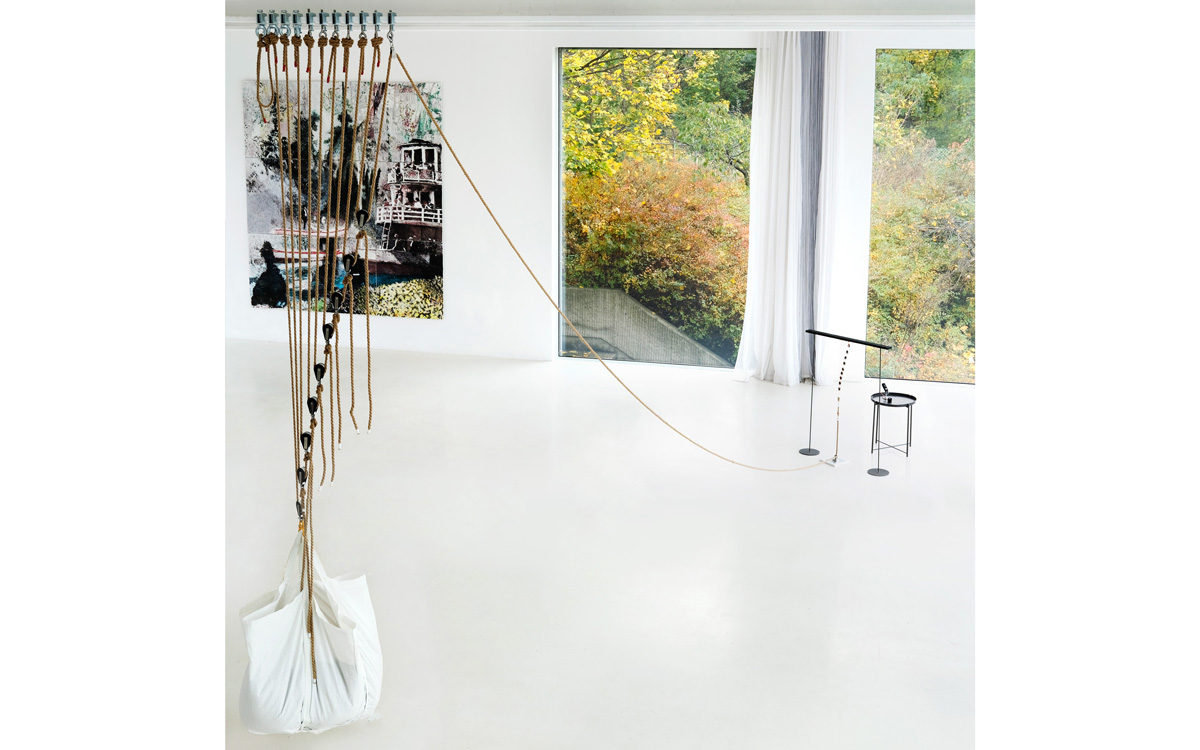

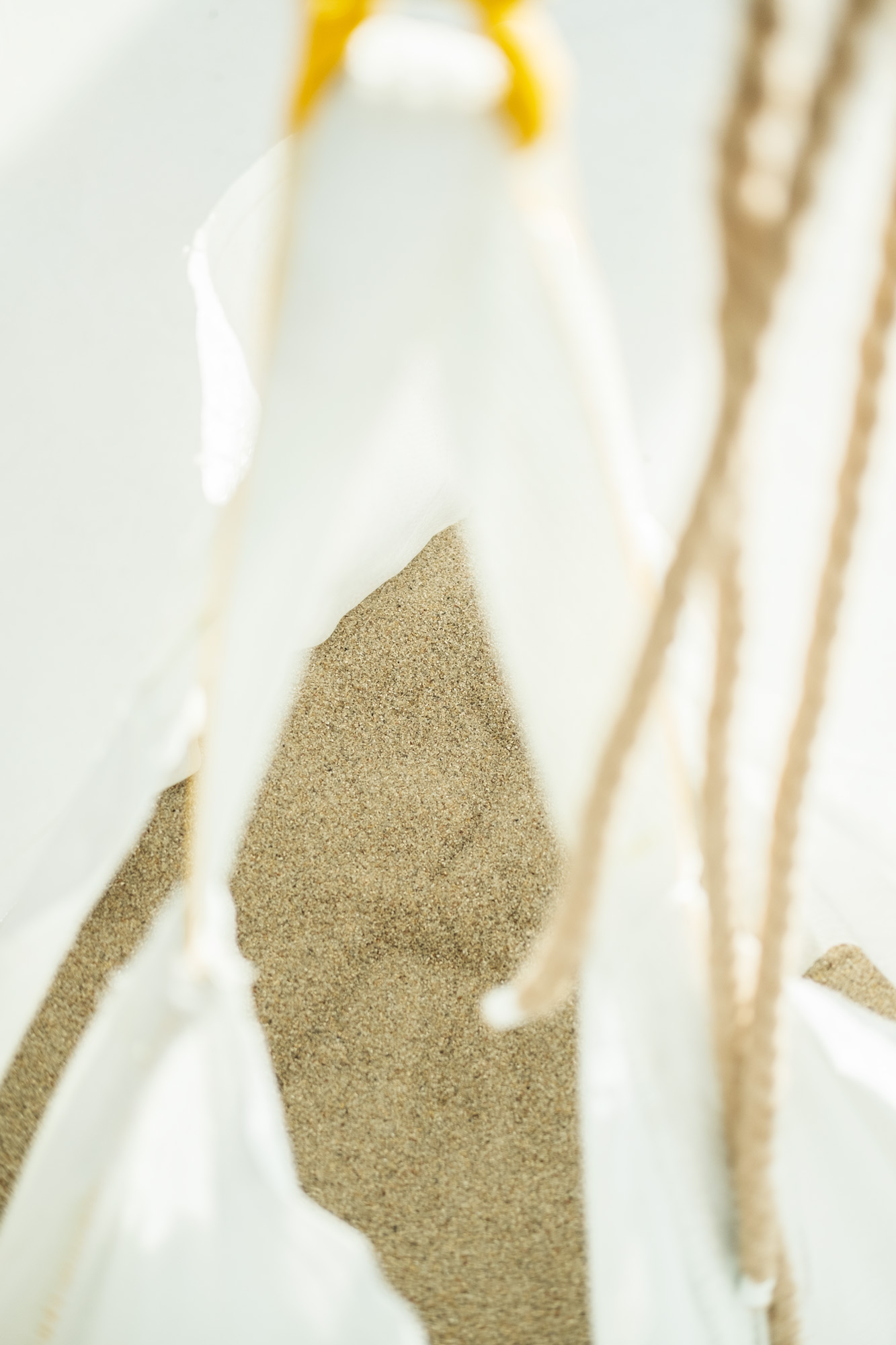
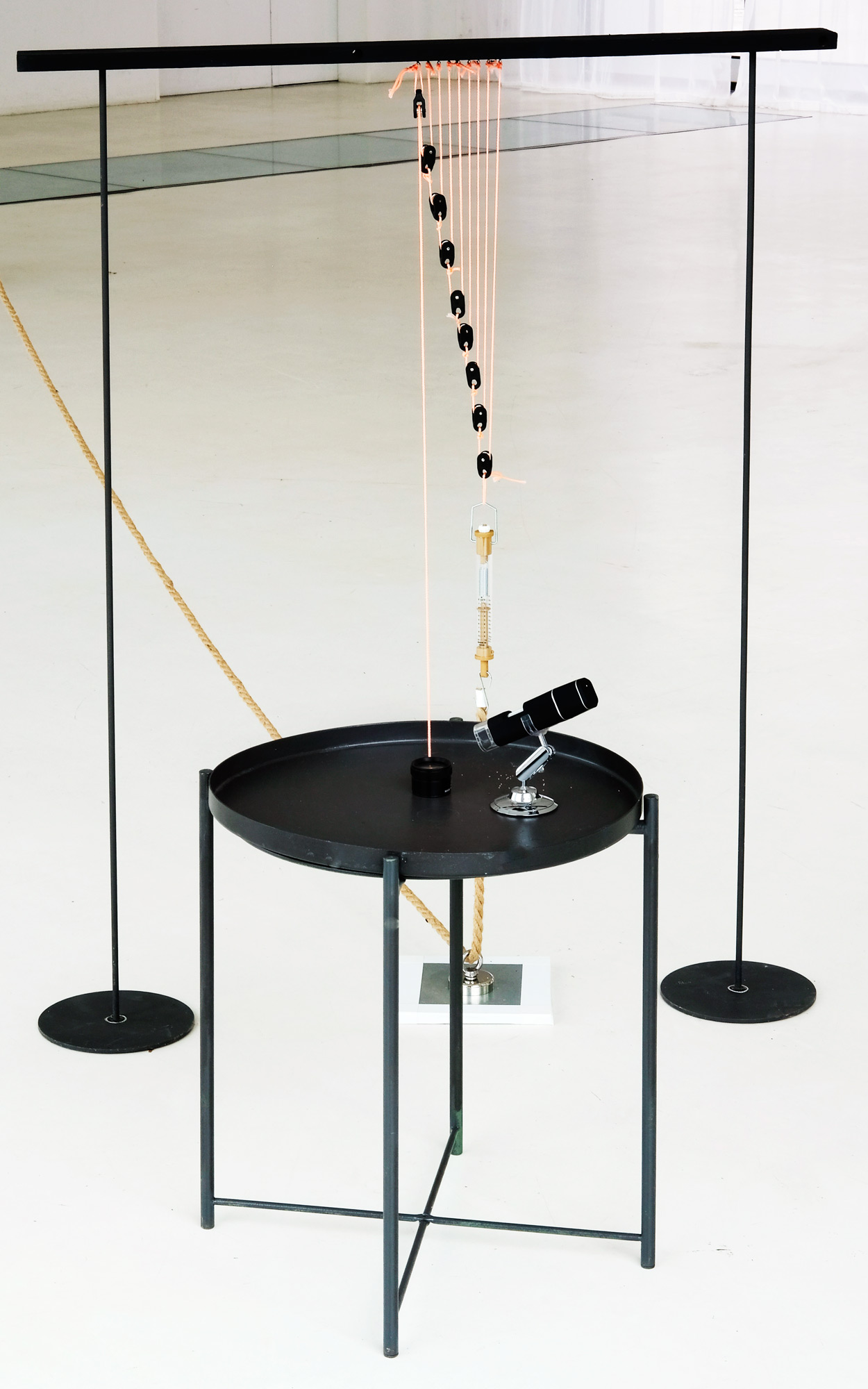
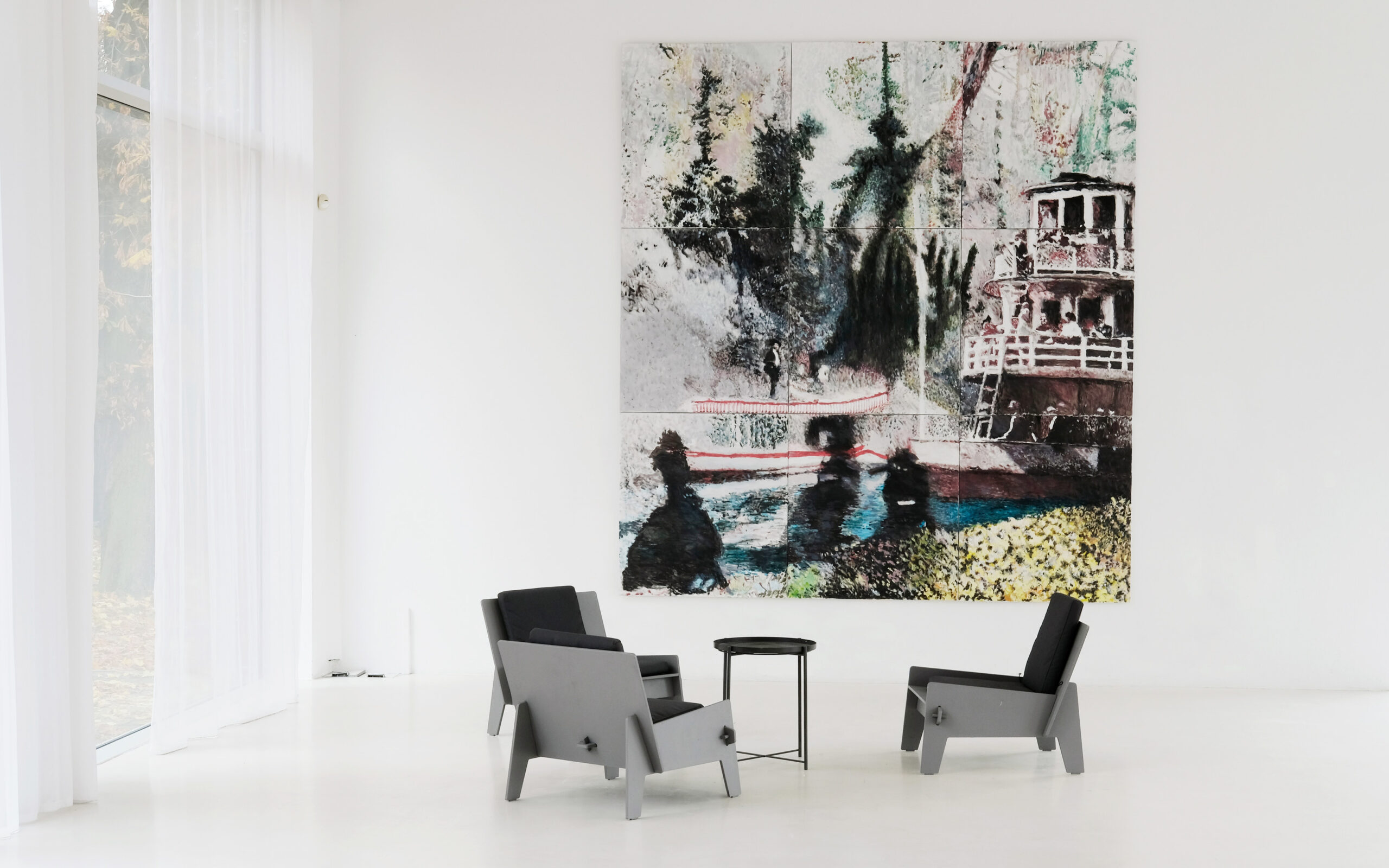
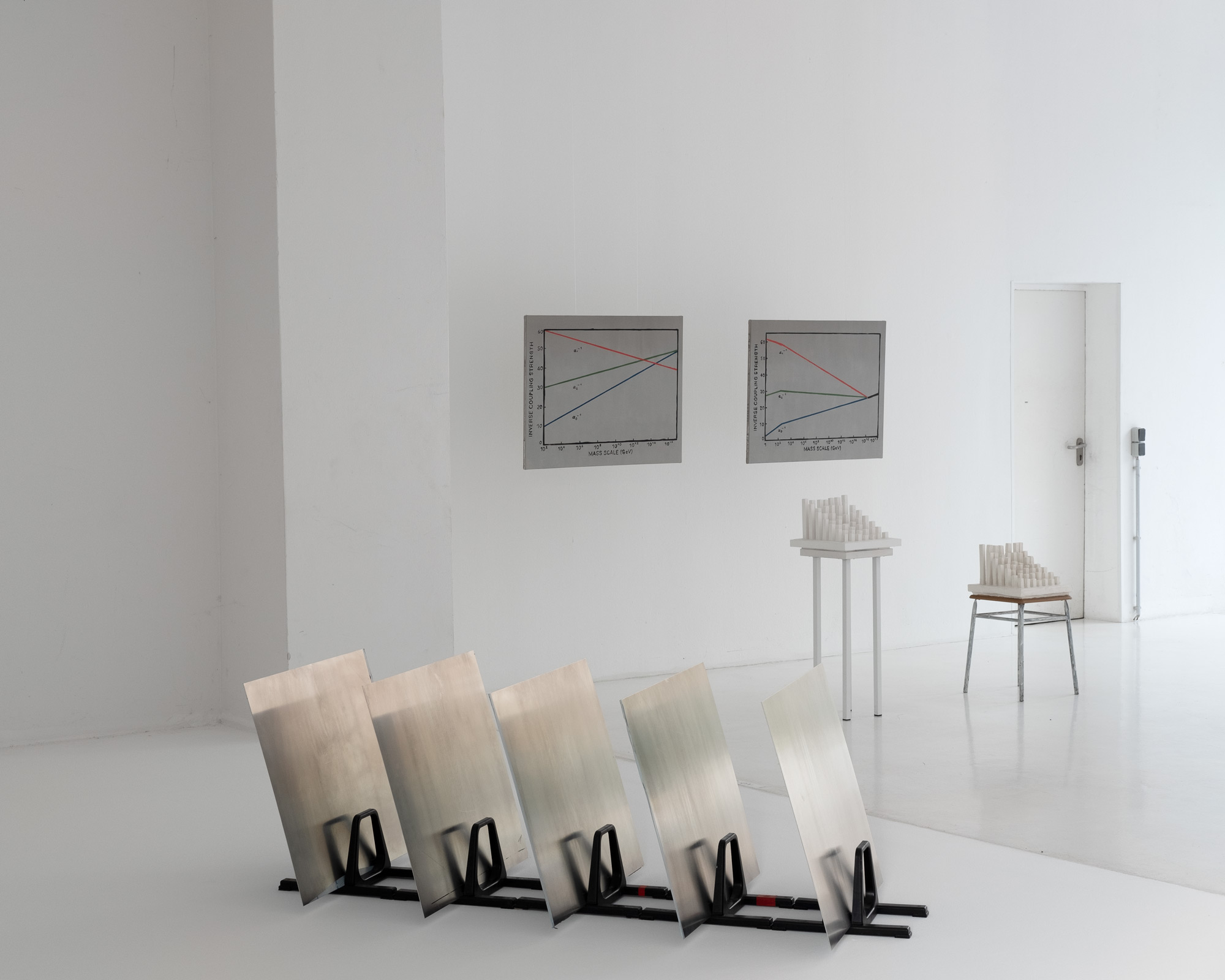


Als verbildlichte Informationen fließen Diagramme und Statistiken in Martin Feldbauers künstlerische Arbeit ein und zeigen, wie unsere Gesellschaft durch mathematische Modelle beschreibbar gemacht wird. Laut einem Bericht der britischen Hilfsorganisation Oxfam aus dem Jahr 2018 besitzen weltweit 42 Menschen zusammen so viel Vermögen wie die gesamte ärmere Hälfte der Weltbevölkerung. Kritik an der Grundlage der Daten und an deren Interpretation ist sicher wichtig und bei derartigen Schätzungen angebracht – dennoch ist das Muster, das sich abzeichnet, eindeutig: Wohlstand häuft sich „an der Spitze“ an, während „die breite Masse“ abgehängt wird.
Berechnet man das Verhältnis der oben erwähnten Zahlen kommt man auf 1:88.095.000. Wie kann man diesen enormen Unterschied bildlich darstellen? Sand scheint hierfür ein geeignetes Material zu sein. Berücksichtigt man die spezifische Dichte von Quarzsand und wählt eine gut sortierte Korngröße, kommt man auf ein ungefähres Verhältnis von einem Sandkorn zu 229kg Sand. Das sind die Eckdaten auf Grund derer eine eigens für FELD+HAUS Projects Berlin entwickelte Installation entstanden ist. Die Frage lautet: Wie ist es möglich, so eine Unausgewogenheit in die Balance zu bringen?
Als Mitbegründer des legendären Frankfurter Labels „Phantombüro“, das zahlreiche Installationen und Projekte im öffentlichen Raum verwirklicht hat, kennt Martin Feldbauer die Potentiale kollektiver Prozesse, nutzt für seine eigenen raumgreifenden Arbeiten gerne unterschiedliche Methoden und für seine teils großformatige Malerei Impulse verschiedener Stile.
Diagrams and statistics play a major role in Martin Feldbauer’s artistic work as visualized information which show, how our society is describable through mathematic models. According to a report of the British aid organization Oxfam from 2018, 42 people own as much wealth as the whole poorer half of the world’s population. Criticism towards the basis of the data and its interpretation is certainly important and appropriate considering those estimates – nevertheless the standing out pattern is obvious: prosperity accumulates “at the top”, while the “broad masses” are suspended.
When calculating the ratio of above mentioned numbers, the outcome is 1:88,095,000. How is it possible to illustrate this enormous difference? Sand seems to be an appropriate material for that. Taking into account the specific density of quartz sand and choose a well sorted grain size, you get an approximate ratio of one sand grain to 229kg of sand. These are the key parameters for an installation which was created specifically for FELD+HAUS Projects Berlin. The question is: how is it possible to balance this instability?
As a co-founder of the legendary Frankfurt label “Phantombüro”, which realized numerous installations and projects in public spaces, Martin Feldbauer is aware of the potentials of collective processes and uses different methods for his own extensive works as well as impulses of different styles for his large sized paintings.